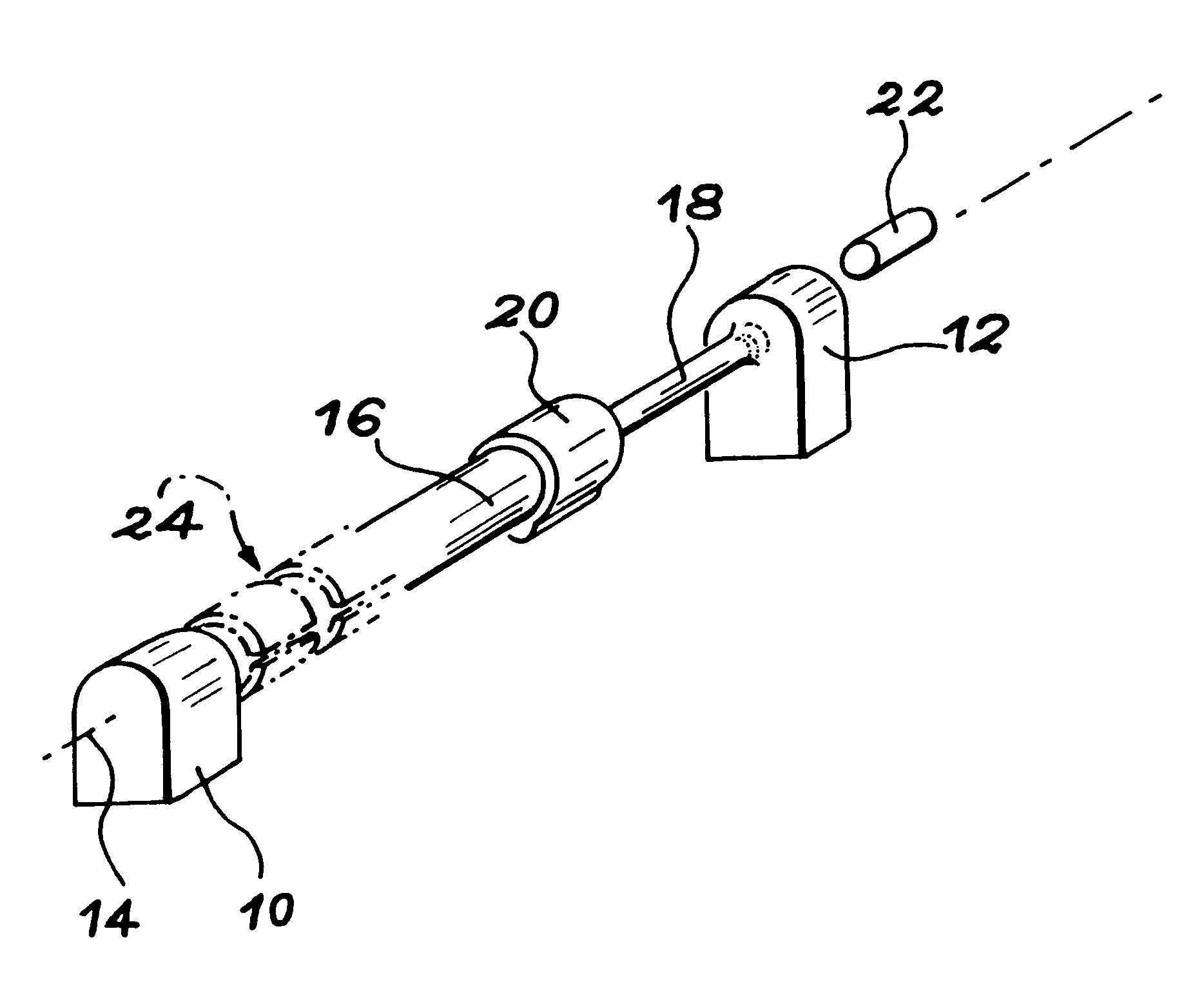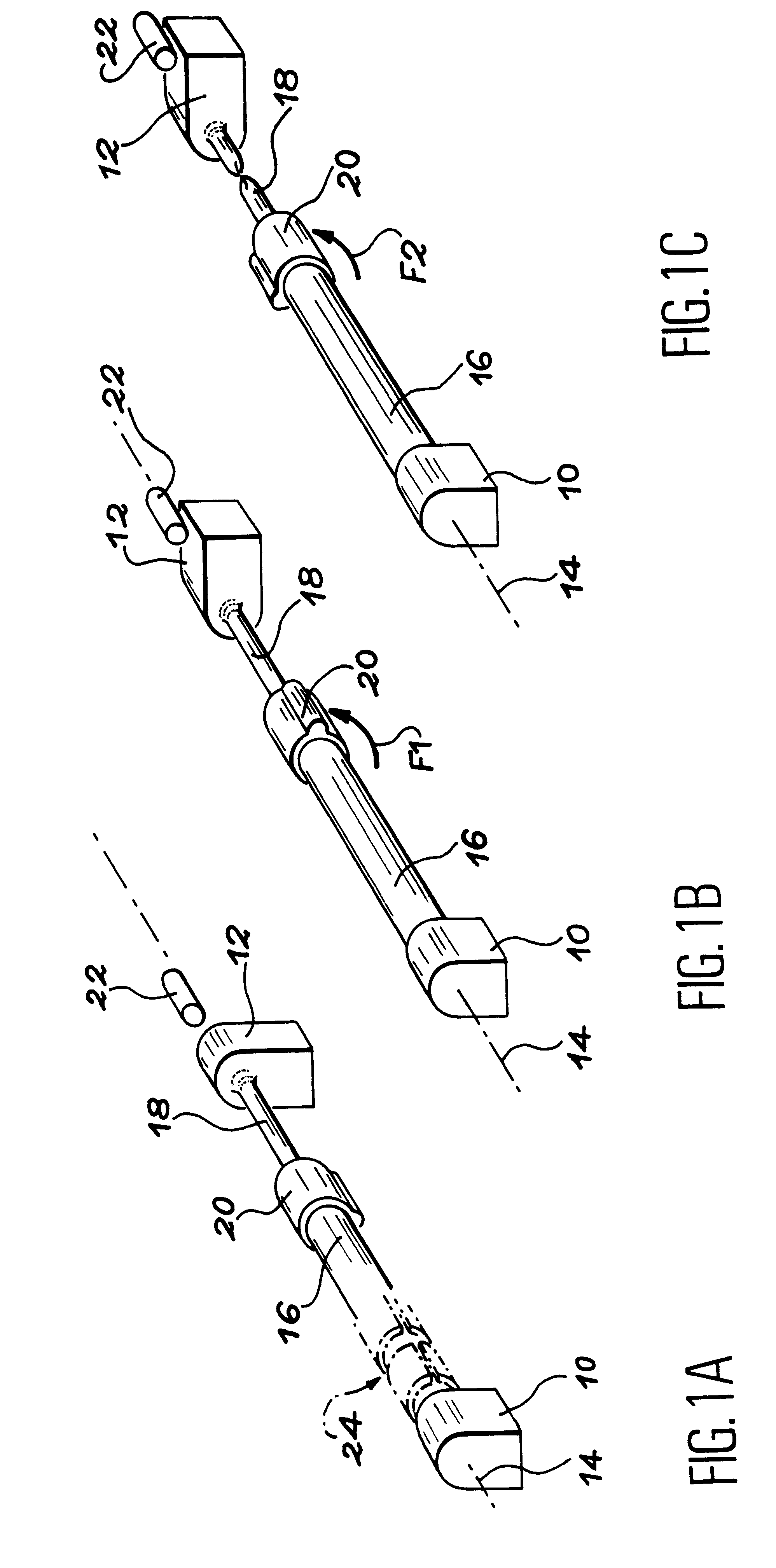Device for controlling a relative rotation between two articulated elements and a deployable mechanical structure, particularly for a space vehicle, using at least one device of this type
- Summary
- Abstract
- Description
- Claims
- Application Information
AI Technical Summary
Benefits of technology
Problems solved by technology
Method used
Image
Examples
Embodiment Construction
In FIGS. 1A to 1C, has been shown very diagrammatically a control device according to the invention, activating which induces a high torque allowing a high relative rotation angle to be generated between a first element 10, supposed fixed and a second element 12 to be engaged, around an axis 14.
The control device according to the invention mainly includes a torsion bar 16, of an extended cylindrical shape, made of a bistable shape memory alloy. The torsion bar 16 is centred on the axis 14 around which a pre-set relative rotation between the elements 10 and 12 is to be controlled.
Heating means of the torsion bar 16 are provided, to control the activation of the device. These heating means are shown diagrammatically as 24 in FIG. 1A. They have not been shown in FIGS. 1B and 1C. These heating means 24 will be described subsequently by reference to FIG. 2.
A first end of the torsion bar 16 is connected directly in rotation to the fixed element 10. The second end of the bar 16 is connecte...
PUM
 Login to View More
Login to View More Abstract
Description
Claims
Application Information
 Login to View More
Login to View More - R&D
- Intellectual Property
- Life Sciences
- Materials
- Tech Scout
- Unparalleled Data Quality
- Higher Quality Content
- 60% Fewer Hallucinations
Browse by: Latest US Patents, China's latest patents, Technical Efficacy Thesaurus, Application Domain, Technology Topic, Popular Technical Reports.
© 2025 PatSnap. All rights reserved.Legal|Privacy policy|Modern Slavery Act Transparency Statement|Sitemap|About US| Contact US: help@patsnap.com



